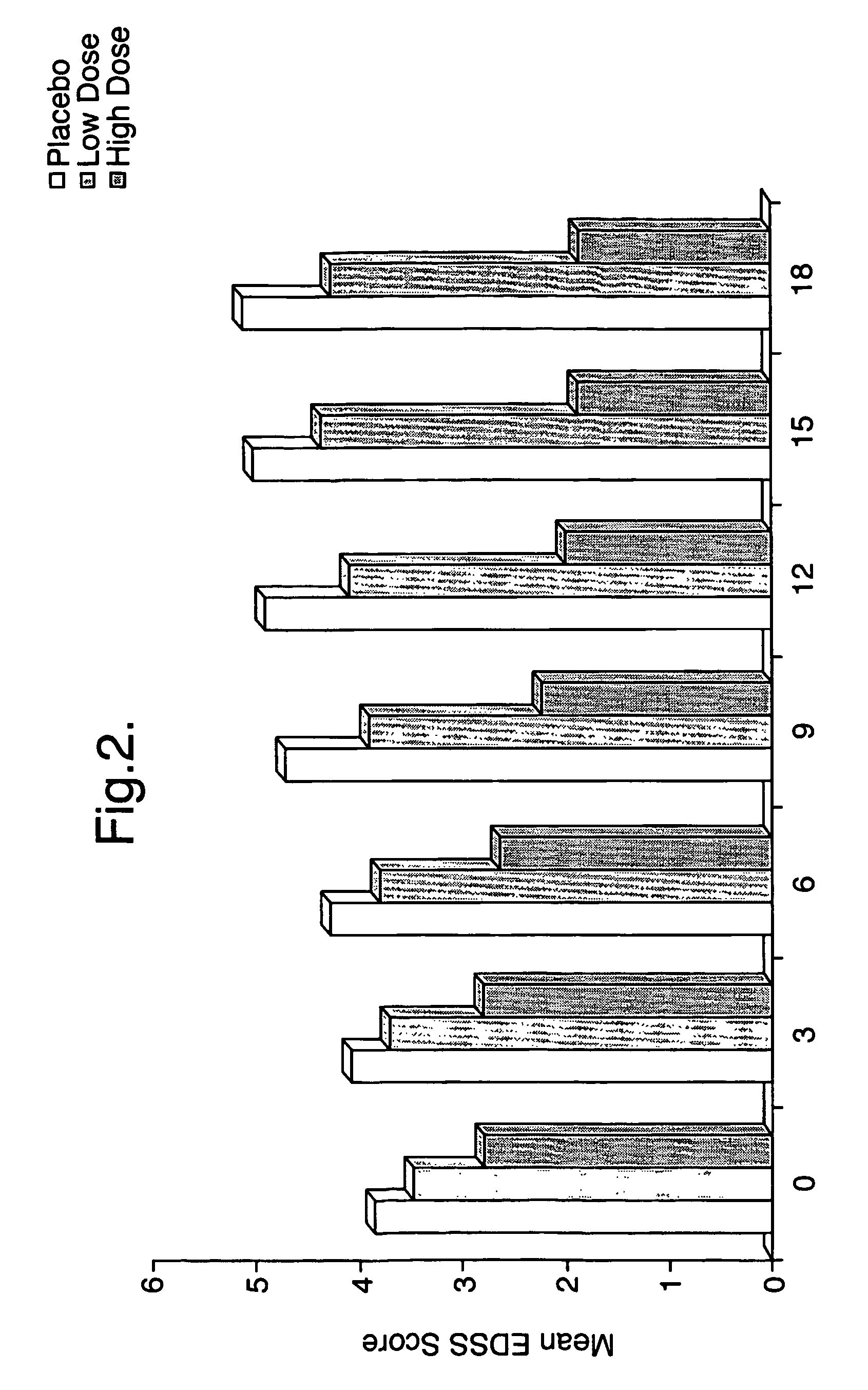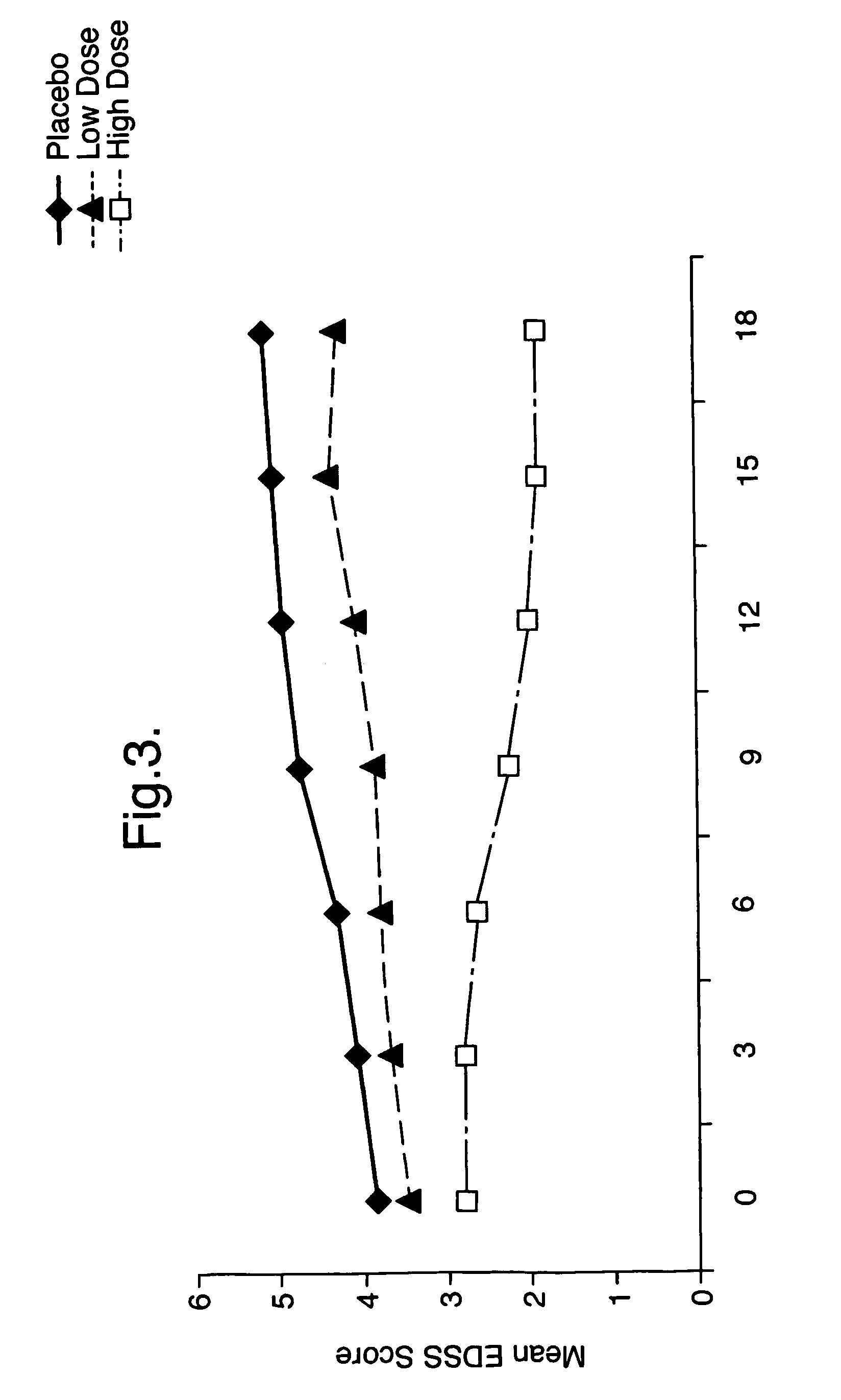Use of triglyceride oils containing γ-linolenic acid residues and linoleic acid residues for the treatment of neurodegenerative disease
a technology of triglyceride oils and linoleic acid, which is applied in the direction of cardiovascular disorders, immunological disorders, drug compositions, etc., to achieve the effect of improving almost all symptoms of ms
- Summary
- Abstract
- Description
- Claims
- Application Information
AI Technical Summary
Benefits of technology
Problems solved by technology
Method used
Image
Examples
Embodiment Construction
Materials / Sample-preparation
Monoacidtriacylglycerols were purchased from Sigma Chemicals and Nu-Chek-Prep Inc:
[0071]
Tripalmitin(Tri-16:0)Tristearin(Tri-18:0)Triolein(Tri-18:1n-9)Trilinolein(Tri-18:2n-6)Trigammalinolenin(Tri-18:3n-6)Trieicosenoin(Tri-20:1n-9)Trierucin(Tri-22:1n-9)Trinervonin(Tri-24:1n-9)
Approx 180 mg of lipid in 700 μL of deuteriochloroform was used throughout the study.
13C-NMR-data
The proton-decoupled 13C NMR data with suppressed NOE were collected at 21° C. in a 5-mm broadband probe on a Jeol 500 MHz spectrometer operating at 125.728 MHz. Waltz decoupling was the chosen mode of decoupling and was gated on only during the 14.89 s acquisition time. The relaxation delay was set at 30 secs and the pulse angle was 90°. The spectral window used was ca. 35 ppm (from 173.5 to 172.6 ppm) with a 170 ppm offset. The spectra were internally referenced to CDCl3 at 77.0 ppm. Typically, the approximate number of scans collected for adequate signal-to-noise ranged from 300 to 1200...
PUM
| Property | Measurement | Unit |
|---|---|---|
| pulse angle | aaaaa | aaaaa |
| acquisition time | aaaaa | aaaaa |
| transforming growth factor β | aaaaa | aaaaa |
Abstract
Description
Claims
Application Information
 Login to View More
Login to View More - R&D
- Intellectual Property
- Life Sciences
- Materials
- Tech Scout
- Unparalleled Data Quality
- Higher Quality Content
- 60% Fewer Hallucinations
Browse by: Latest US Patents, China's latest patents, Technical Efficacy Thesaurus, Application Domain, Technology Topic, Popular Technical Reports.
© 2025 PatSnap. All rights reserved.Legal|Privacy policy|Modern Slavery Act Transparency Statement|Sitemap|About US| Contact US: help@patsnap.com



